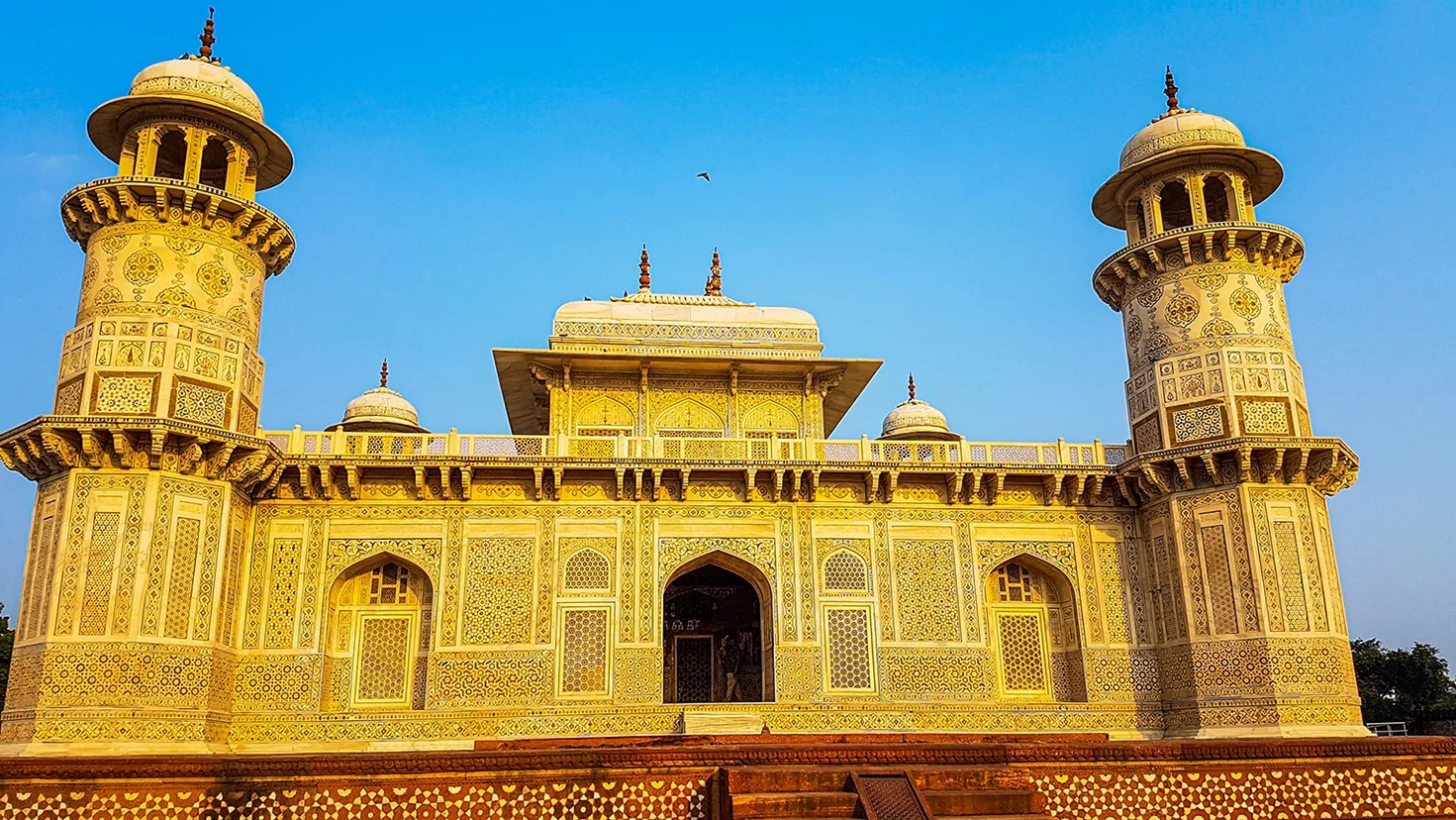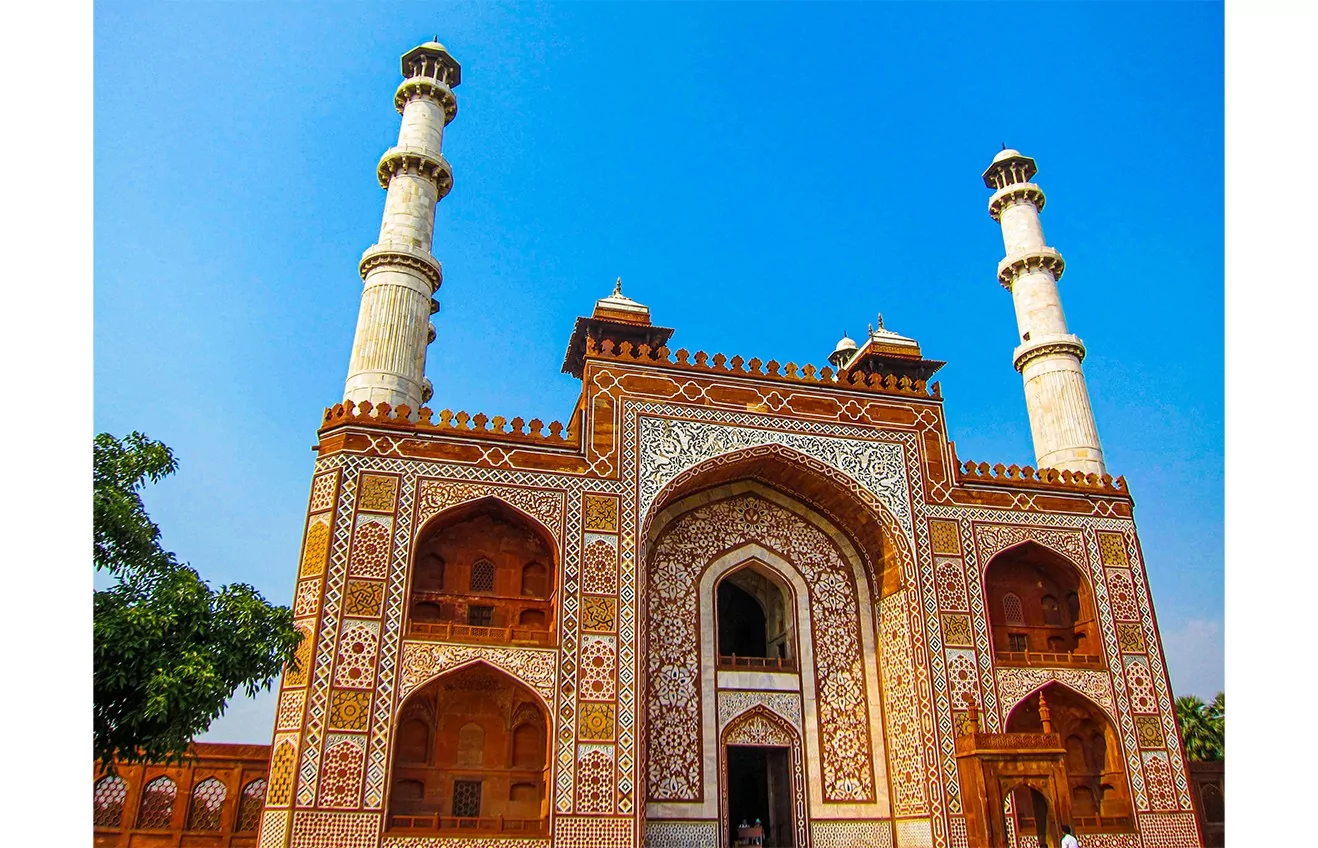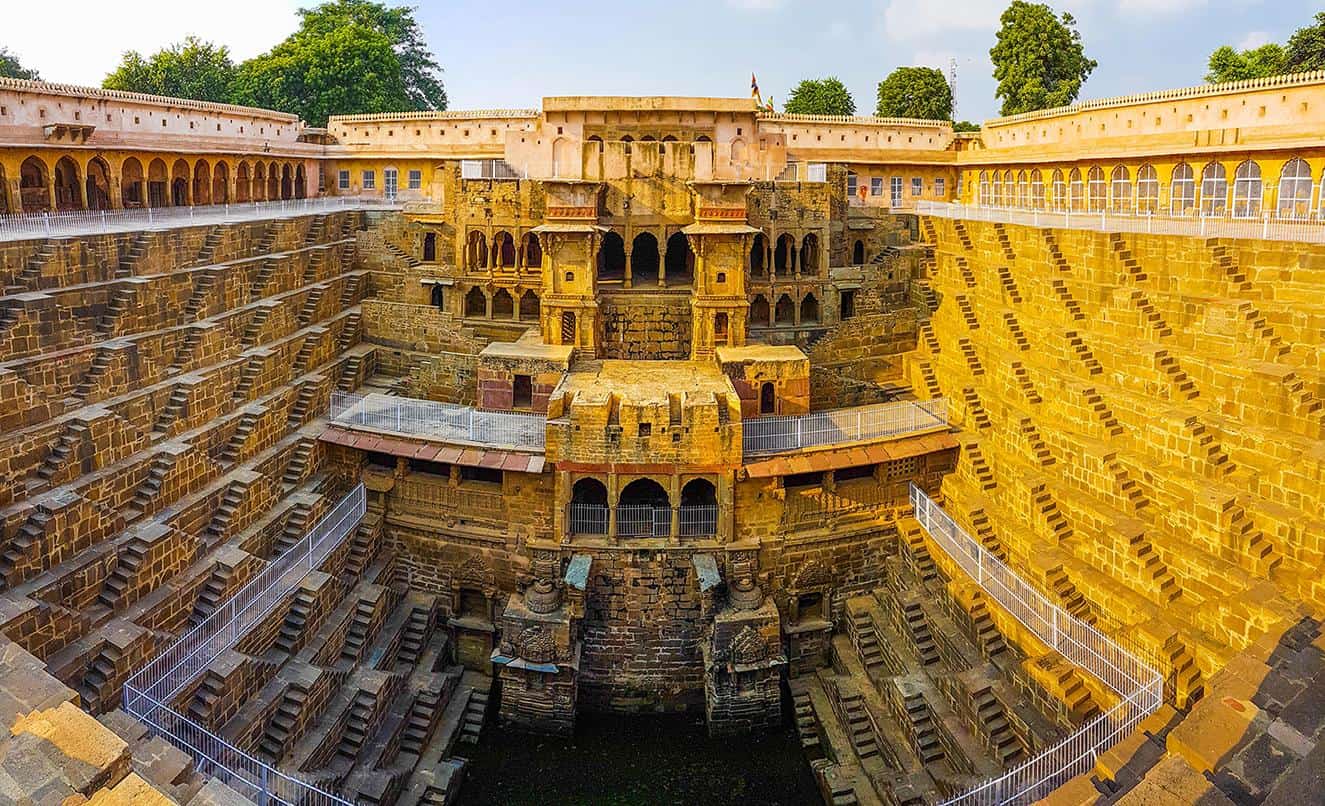
Known for its rich historical and cultural heritage, India is a country of extreme contrast where chaotic street scenery and striking poverty exist alongside marvelous castles and temples, rewarding any intrepid traveler who venture out with unparalleled sights. It's too often the case that the country is deemed as a synonym to the Taj Mahal, India's most renowned landmark and the proclaimed eighth wonder of the world, nevertheless, Agra, the city where the glorious marble mausoleum resides in, is also home to countless other charming and lesser known sites, five of which are particularly unmissable.
Nicknamed as the Baby Taj Mahal, the challenging to pronounce Tomb of I’timād-ud-Daulah was built in the 17th century by Nur Jahan, Mughal Emperor Jahangir’s wife, as a tomb for her beloved dad, Mirza Ghiyas Beg, who also served as a prime minister in the Mughal Empire.
Nestled on Yamuna river’s eastern bank, the complex features a beautifully embellished façade, covered with manifold intricate details, surrounded by a large well-kept garden that dwarfs it in terms of the overall size.
The iconic monument consists of two main parts varying in colors and materials, a square shaped platform made of red sandstone, serving as a pedestal for the remarkable ivory marble building, forming together an eye-catching mosaic of textures and hues, further intensified by the stunning views of the nearby river, particularly during sunsets.
Due to its perceived beauty, locals often refer to the temple as the jewel box of Agra, while the only reason it remained relatively undiscovered by foreign visitors is the sheer fame of the Taj Mahal that eclipses any other architectural gems around.
It might come as a surprise, but the tomb was built five years prior to its more famous peer, and was the first one to be constructed using marble, in fact, upon completion, the then emperor Shah Jahan was immensely impressed by the end result and decided to incorporate marble as the main building material of the Taj Mahal, thus creating a direct historic link between the two venerated sites.
One of the best ways to visit the Baby Taj Mahal is by hiring a private driver that will take you on a hop and off tour around the city, concluding it at the tomb around sunset time.

Baby Taj Mahal's façade chockfull of intricate details
photography by: Yen Shen
Located at the suburb of Sikandra, roughly 14 kilometers away from downtown Agra, the secluded tomb of Emperor Akbar, the third Mughal emperor, is often skipped by tourists who venture on a day trip to Agra eager to see the Taj Mahal. Despite its relative remoteness, Akbar’s Tomb is definitely a worthy place to go to, featuring authentic Mughal architecture that predates the Taj Mahal, and immersed in a lovely garden.
Built in 1613 by Emperor Jahangir as a gesture for his late father, Emperor Akbar, the tomb was once a lavish place filled with treasures, jewelry and dazzling carpets. However, an uprising led by a local chieftain resulted in the ransacking of the tomb and the cremation of Emperor Akbar’s body. Fortunately, most of the architectural complex was restored during the British occupation of India, reviving its beauty yet again.
Standing out as an architectural masterpiece, the Persian style entrance gate is topped by four marble minarets, all of which are adorned with intricate carvings. As you cross the gate and enter inside into the main complex, you’ll immediately be struck by the sight of a three-story palace-like building, built with red sandstone and decorated with numerous marble pavilions. Enclosed within the complex is an adorable garden that alternates between paved walkways and lawns with hedges, where peacocks and monkeys, who have been living at premises for centuries, are romping around.

The gateway and minarets of Akbar's Tomb
photography by: Yen Shen
When it comes to perfectly preserved ancient cities, the first term that pops up for most people is probably Angkor Wat, yet intriguingly, India has its own version of Cambodia’s most famous tourist site.
Situated around 40 kilometers from Agra, Fatehpur Sikri was the capital of the Mughal Empire during its heyday in the 16th century.
Formerly named Sikri, the village was once visited by Emperor Akbar that met with a local Muslim hermit who correctly predicted that he will have a baby boy as his heir. As a gesture for the monk’s prophecy, the Emperor decided to establish a city across the area. Originally, the city was designated as the empire’s capital, however, a lack of water and natural resources forced Akbar to ultimately relocate the capital city to Lahore, in nowadays Pakistan.
Following the removal of its status as a capital, Fatehpur Sikri fell into a state of decay, only to be reversed in 19th century when the Indian subcontinent was governed by the British Empire.
As of today, the city remains a relatively intact ghost town, reflecting the sheer glory and might the Mughal Empire once possessed, featuring a typical 16th century Mughal architecture. The buildings throughout the complex are built with red sandstone and decorated with myriads of Muslim and Hindu ornaments. Interestingly, each building differs from the rest of complex not only by its own unique design, but also by the story behind it, fusing together into a fascinating medley of history and architecture.
Perhaps the most prominent building in Fatehpur Sikri is Panch Mahal, a 5-story palace that is reminiscent of a Buddhist temple. As you move upwards each floor decreases in size, culminating in a dome atop the roof level. Supported by 176 columns, the palace once functioned as a recreational center for members of the royal family, where dancers and musicians performed in front of the Emperor.

Fatehpur Sikri's Panch Mahal
photography by: Yen Shen
Nestled in front of Fatehpur Sikri, Jama Mosque, literally means “Friday Mosque”, was built in 1571 by Emperor Akbar who ruled the Mughal Empire. These days Jama Masjid is one of the largest mosques in India, annually pilgrimaged by thousands of Muslim devotees.
The mosque is inarguably an eye-catching piece of architecture, however, its entrance structure, locally known as Buland Darwaza (door of victory), is spectacular by its own right and sometimes it seems as if it eclipses the mosque itself. Built as a monument to honor Emperor Akbar’s military victory over the Gujarats, Buland Darwaza is the largest gateway building in the entire world. Built entirely with red sandstone and topped by several domes, it’s often argued that the gateway figuratively resembles the emperor wearing his crown.
Once inside, you’ll have a chance to witness the beautifully decorated mosque with its Persian-style engravings, the largest one in the world at the time of its inception. Nestled deep inside the mosque’s complex is the marble tomb of Salim Chishti, the hermit who foresaw the birth of Emperor Jahangir, Akbar’s son. Interestingly, the tomb is encased in a marble pavilion that features intricate carvings of Islamic lattice, adorning both its exterior and interior parts.
Take note that the mosque is swarmed by scammers who pretend to be professional guides that offer tours inside the complex, therefore, if you prefer a guided tour it’s far better to book it in advance.

Jama Mosque's formidable gateway, known as Buland Darwaza (Door of Victory)
photography by: Yen Shen
Lying deep within Rajasthan’s desert between Agra and Jaipur, the village of Abhaneri holds one of India’s most beautiful and photogenic places, Chand Baori, also known as Abhaneri Step Well. Built by King Chanda around the 9th century, the well vastly predates the glorious Taj Mahal.
It’s widely believed that the water in the well were used for religious and ceremonial purposes, given the fact that the Harshat Mata Temple stands a short distance away. Additionally, the site’s architectural features of the numerous staircases centered around a pool allegedly reflect Ksheersagar, the ocean of milk where God Vishnu lives according to the Hindu mythology.
As you’ve probably concluded by now, the well’s main charm comes from the series of triangular staircases that ultimately reach a square shaped pond. With a total of 3,500 stairs, one can’t help but wonder how villagers walked all the way downwards to collect water. Each one of the thousands of stairs provides a different perspective, an aspect that is well exhibited in the dozens of films which were shot in Chand Baori, including “The Dark Knight Rises” Batman movie.
Due to its distant location, standing around 150 kilometers from Agra and 95 kilometers from Jaipur, it’s recommended to stop by for a couple of hours if you’re making your way between the two cities.

Abhaneri Step Well
photography by: Yen Shen
Based in Malaysia, I am a travel enthusiast who has been exploring our beautiful world since childhood.
Every time I visit a foreign country, I broaden my horizons by authentically experiencing different cultures wherever I go, as matter of fact, I feel that a significant portion of my personality exists solely thanks to the numerous experiences I had around the globe.
Today, I have started my own personal initiative with the goal of sharing online my travel experiences while also providing an historic perspective. I truly believe that one of the best ways to fully learn about a place you visit is by a deep understanding of its history.
If you are interested in checking out my travel experiences and learning a pinch of history along the way, here are my other social media sites where you can get in touch with me:

photography by: Yen Shen